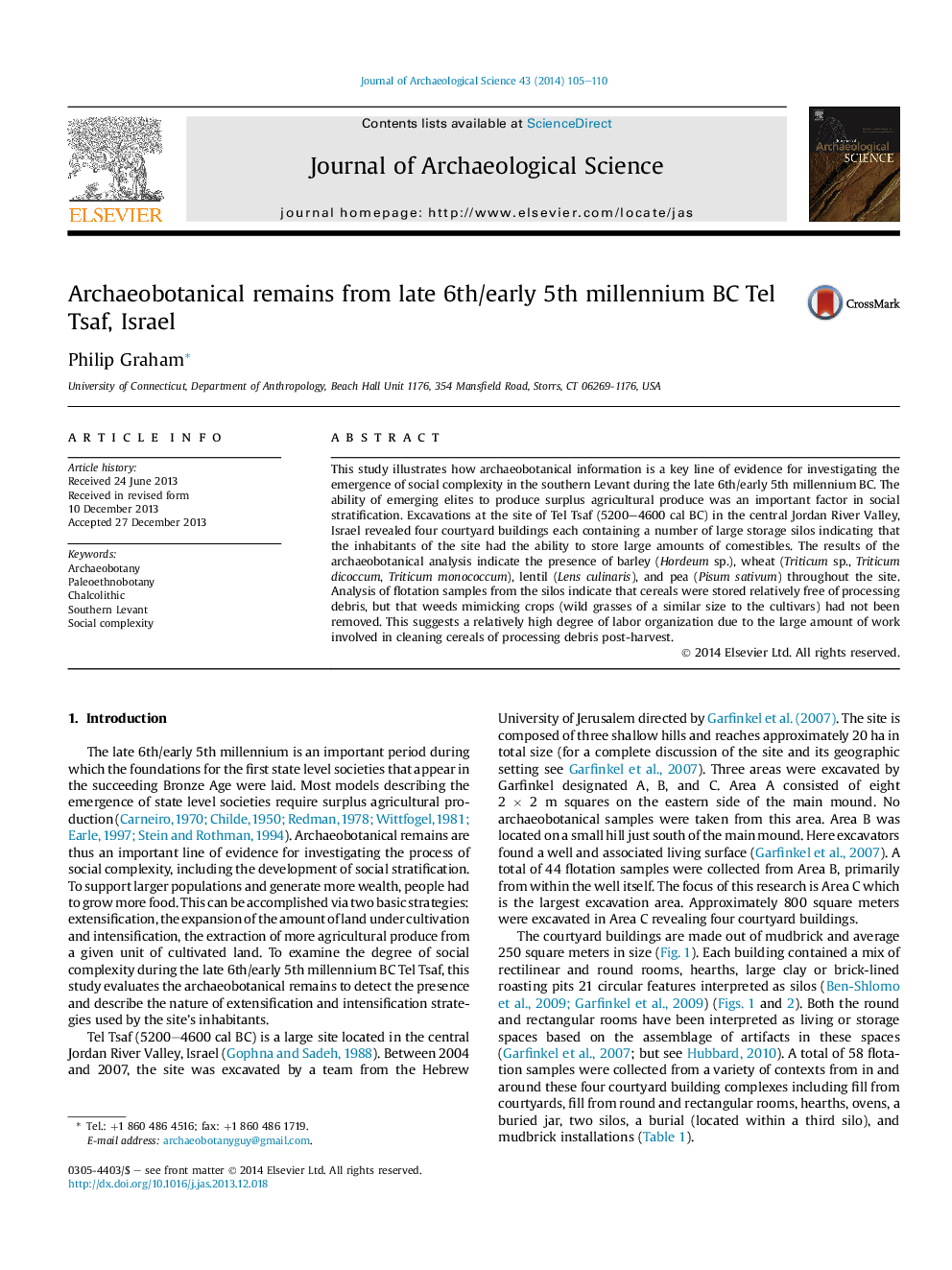| کد مقاله | کد نشریه | سال انتشار | مقاله انگلیسی | نسخه تمام متن |
|---|---|---|---|---|
| 7443604 | 1483917 | 2014 | 6 صفحه PDF | دانلود رایگان |
عنوان انگلیسی مقاله ISI
Archaeobotanical remains from late 6th/early 5th millennium BC Tel Tsaf, Israel
دانلود مقاله + سفارش ترجمه
دانلود مقاله ISI انگلیسی
رایگان برای ایرانیان
کلمات کلیدی
موضوعات مرتبط
مهندسی و علوم پایه
مهندسی مواد
دانش مواد (عمومی)
پیش نمایش صفحه اول مقاله

چکیده انگلیسی
This study illustrates how archaeobotanical information is a key line of evidence for investigating the emergence of social complexity in the southern Levant during the late 6th/early 5th millennium BC. The ability of emerging elites to produce surplus agricultural produce was an important factor in social stratification. Excavations at the site of Tel Tsaf (5200-4600 cal BC) in the central Jordan River Valley, Israel revealed four courtyard buildings each containing a number of large storage silos indicating that the inhabitants of the site had the ability to store large amounts of comestibles. The results of the archaeobotanical analysis indicate the presence of barley (Hordeum sp.), wheat (Triticum sp., Triticum dicoccum, Triticum monococcum), lentil (Lens culinaris), and pea (Pisum sativum) throughout the site. Analysis of flotation samples from the silos indicate that cereals were stored relatively free of processing debris, but that weeds mimicking crops (wild grasses of a similar size to the cultivars) had not been removed. This suggests a relatively high degree of labor organization due to the large amount of work involved in cleaning cereals of processing debris post-harvest.
ناشر
Database: Elsevier - ScienceDirect (ساینس دایرکت)
Journal: Journal of Archaeological Science - Volume 43, March 2014, Pages 105-110
Journal: Journal of Archaeological Science - Volume 43, March 2014, Pages 105-110
نویسندگان
Philip Graham,